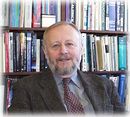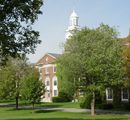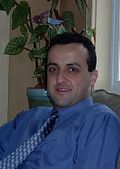Difference between revisions of "Metal ions and metalloproteins"
(→Confirmed speakers) |
(→Confirmed speakers) |
||
| Line 20: | Line 20: | ||
{| class="wikitable" | {| class="wikitable" | ||
|- | |- | ||
| − | |<!--column1-->[[File:Valentine1.jpg| | + | |<!--column1-->[[File:Valentine1.jpg|120px|]] |
| − | |<!--column2-->[[File:Crumbliss.jpg| | + | |<!--column2-->[[File:Crumbliss.jpg|130px|]] |
| − | |<!--column3-->[[File:Kosman.jpg| | + | |<!--column3-->[[File:Kosman.jpg|80px|]] |
| − | |<!--column4-->[[File:Wilcox.jpg| | + | |<!--column4-->[[File:Wilcox.jpg|150px|]] |
| − | |<!--column5-->[[File:Ponka.jpg| | + | |<!--column5-->[[File:Ponka.jpg|130px|]] |
|- | |- | ||
|<!--column1-->Dr. Valentine | |<!--column1-->Dr. Valentine | ||
Revision as of 23:40, 27 April 2010
Metal ions are essential nutrients for all organisms and play important roles in many biochemical processes. The diverse network of proteins and enzymes involved in intra- and inter-cellular metal trafficking pathways is very complex but highly specific and tightly regulated. Abnormal cellular metal ion concentrations may lead to oxidative damage (particularly for redox-active metals such as Cu and Fe), various diseases and cell death. While many aspects of metal-ions trafficking have been addressed by biochemists and cell biologists, chemists provide yet another layer of information that is crucial to a better understanding of these transport pathways, whether it is related to metal-ions specificity, affinity, kinetics and thermodynamics. Understanding the molecular and mechanistic details of metalloenzymes and the processes they undergo opens up opportunities for metal-ion chelation, detoxification, anti-tumor and anti-cancer therapies. This symposium will address various aspects of metal ion homeostasis and discuss structure-function relationships of a number of metal-ion binding, transport and storage proteins and processes.
Organizer
Dr. Fadi Bou-Abdallah is an assistant professor of chemistry at SUNY Potsdam. He obtained a BS in chemistry from the Lebanese University (in Lebanon) and a PhD in physical chemistry from the University of Paris VI (France). Prior to joining SUNY Potsdam, he was a Research Scientist at the University of New Hamsphire where he did his postdoctoral work on the iron storage protein, ferritin. His research interests are in the areas of iron-protein biochemistry in particular proteins involved in the metabolism of iron, i.e. ferritin and transferrin. The overall goal of his research program is to elucidate the structure-function relationships in these and other metal-ion trafficking proteins and their mechanisms of interaction with various metal-ions.
Confirmed speakers
- Prof. Ann M. Valentine, (Yale University): Nicatransferrin and Serum Ti(IV) Transport
- Prof. Al Crumbliss (Duke University): Iron Transport in Bacteria
- Prof. Dan Kosman: (University of Buffalo): Multicopper Ferroxidases: A Workshop on Copper Coordination Chemistry, Electron Transfer and Metallophysiology
- Prof. Dean Wilcox: (Dartmouth College): Thermodynamics of Metal-Protein Interactions
- Prof. Prem Ponka, (McGill University): The Biochemistry of Iron Metabolism

|

|

|

|

|
| Dr. Valentine | Dr. Crumbliss | Dr. Kosman | Dr. Wilcox | Dr. Ponka |

